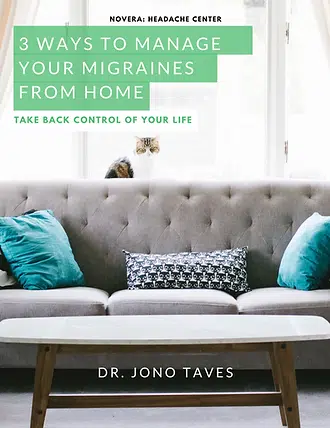
We have all heard of the “fight or flight” system, also known as the sympathetic system. Well, today we are going to focus on the opposing “rest and digest” system, or the parasympathetic system. We need both systems and want to make sure we find a balance of both. In our modern society, we can sometimes get caught up in the “fight or flight” system too often, and this can create a lot of subsequent issues within the body.
So what could help us “fight off” the “fight or flight system?” (Yes, dad jokes do come with this blog). Well, one way is to stimulate the vagus nerve. The vagus nerve, or 10th cranial nerve, is the longest and most complex cranial nerve in the body. It is extremely diverse in that it helps regulate body temperature, lower heart rate and blood pressure, satiation, inflammation and even our immune system. It helps control our stomach acidity, blood sugar, water and sodium balance. If you have headache triggers such as dehydration or glucose levels if you eat too little or too much, you can start to see the connection here. The vagus nerve has also been called “the great wandering protector” of the body and helps maintain homeostasis, or balance, in the body. It runs from the brainstem, to the ear and down the front of the neck along the carotid artery and then down into the chest and abdomen.
So how does this really relate to headaches and migraines? If you have followed our other posts, you know that here at Novera we believe that your headaches are most likely a neck issue. From there, signals travel through the trigeminal and facial nerve and give pain signals to the head and face. What is interesting is fibers from the vagus nerve physically intertwine with fibers from the trigeminal and facial nerves and the nuclei of the vagus nerve and the nucleus of the trigeminal nerve show extensive interconnections. Also, common muscle trigger points are found in a muscle in front of the neck (sternocleidomastoid) which runs right along with the vagus nerve. As physical therapists, we see this overlap in muscle tension and nerve pathways all the time.
There was a 2019 article that showed good results using non-invasive stimulation of the vagus nerve in relation to decreased headache frequency and intensity. They used a hand held electrical device called gamma core. It was a class 1 (or most widely accepted) randomized control trial of 248 participants all with episodic migraine with or without aura. One group received nVSN within 20 minutes of pain onset and the other received a sham. The findings were: “nVNS significantly increases the probability of having mild pain or being pain-free 2 hours post stimulation.”
So, how can you stimulate the vagus nerve on your own? Well, manipulating the vocal cords is what some of the activities center around. Gargling, singing, laughing, and om-ing in yoga. You can easily fit gargling in after brushing your teeth, and who doesn’t want to start their day off right and sing in the shower or loudly by yourself on the way to work? Keep those friends of yours that make you laugh, too. And if you’re a yogi, I bet you’ve almost immediately felt the calming effect that chanting oms can have on your body and mind. If you want other options, you can also try cold exposure (like taking a cold shower), slow deep breathing, taking probiotics, omega-3 fatty acids and of course, last but definitely not least, exercise.
Now, we don’t believe the vagus nerve is the true source of your head pain, but instead it is a joint mobility neck issue that is causing muscle tension and nerve sensitivity. However, we always want to look at all the research and make sure we can understand and address all aspects for a holistic approach. If you’re struggling with head, neck or face pain, please reach out to us at Novera Headache Center. ,We offer free 30 minute Discovery Visits!




